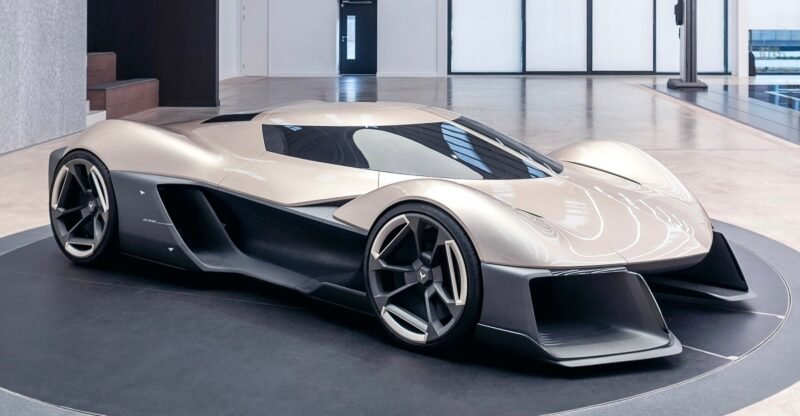Essential Insights
- General Motors unveiled a groundbreaking electric Corvette concept designed by a UK team, featuring an aviation-inspired, aerodynamic design with powered gullwing doors and an augmented windshield display.
- The design pays homage to classic Corvettes, incorporating elements like the split window of the 1963 Sting Ray while introducing GM’s innovative "Apex Vision" structural feature for enhanced visibility.
- The concept focuses on functionality with integrated EV battery technology and air channels for improved airflow, eliminating the need for traditional wings and spoilers, yet allowing for deployable dorsal fins for track use.
- In addition to the Corvette, the UK design team is collaborating on a futuristic GMC vehicle concept, reportedly a spacious van intended for camping, set to debut later this year.
Innovative Design Meets Electric Power
General Motors has taken a bold step forward with its latest project: an electric-powered Corvette concept. The new design comes from a team based in Birmingham, England. This UK design team draws inspiration from the aviation industry, resulting in a futuristic hypercar. With its aerodynamic silhouette and powered gullwing doors, this Corvette is captivating car enthusiasts and environmental advocates alike.
In a press release, GM’s Vice President of Global Design highlighted the “Apex Vision” structure of the vehicle. This structure not only adds aesthetic appeal but also ensures a panoramic view of the road ahead. The design integrates features from past iconic Corvettes, such as the split window windshield from the 1963 model. This blend of nostalgia and innovation embodies GM’s commitment to honoring its legacy while looking toward the future.
A Function-Driven Approach to Performance
The lower half of the concept focuses on functionality, a key aspect of electric vehicle design. GM embeds EV battery technology into the structure, maximizing space and weight distribution. Furthermore, the vehicle incorporates air channels for efficient airflow, which minimizes the need for traditional wings and spoilers. This design choice showcases GM’s forward-thinking approach to performance.
For those concerned about track performance, the Corvette can deploy dorsal fins when needed. This feature enhances cornering capability through aero vectoring, marrying functionality with speed. Moreover, the UK’s design team also collaborates on a new GMC concept vehicle, hinting at GM’s broader vision for electrification across its lineup. As GM ventures into this electrified future, it contributes to a larger conversation about sustainability and innovation in the automotive industry.
Discover More Technology Insights
Stay informed on the revolutionary breakthroughs in Quantum Computing research.
Stay inspired by the vast knowledge available on Wikipedia.
TechV1

